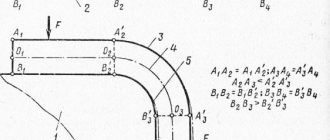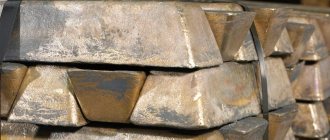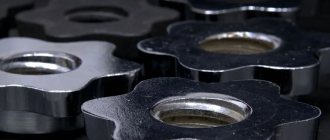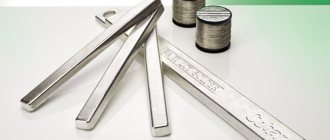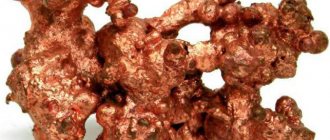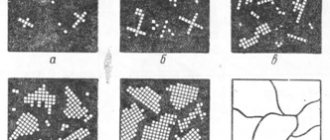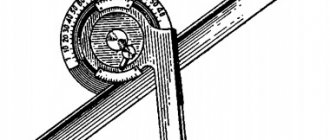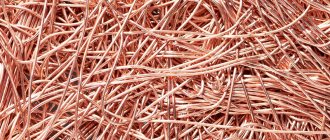Metallurgy and metalworking are the basis of the existence and development of human civilization, since it was the beginning of the extraction and use of metals in everyday life that caused the evolution of society from the Stone Age to more developed forms. A special place in metallurgy is occupied by the creation of alloys, evidence of which is bronze, which became the basis for the emergence of the concept of the “Bronze Age”. An alloy is a mixture of several chemical elements that give the final product certain properties. There is a huge variety of alloys and methods for creating them. Of particular importance in this list is an alloy of zinc and copper, also called brass.
What are alloys?
Alloys are materials made from a mixture of several metals and other elements. They may contain random admixtures of natural components. One of the first known alloys was bronze. Man created products from it back in the 4th millennium BC.
Alloys are made to improve the quality of metals. For example, to make gold jewelry last longer, be stronger, or have a certain shade, a small proportion of nickel, platinum, zinc or silver is added to it.
By mixing several components, you can change the properties of the metal, increase the melting point and malleability, impart strength and hardness, and increase wear resistance. The most common alloys are bronze, brass (an alloy of copper and zinc), cast iron, steel, Babbitt, Pobedit, and duralumin.
They are used in mechanical engineering, construction, industry, aircraft manufacturing, etc. Magnets are made from a mixture of nickel, magnesium and cobalt. Tin and lead were formerly used to make cutlery, and cast iron was widely used to make household items such as frying pans and irons.
Necessary theoretical information.
Methods of expressing the composition of mixtures.
- The mass fraction of a component in a mixture
is the ratio of the mass of the component to the mass of the entire mixture. Usually the mass fraction is expressed in %, but not necessarily. ω ["omega"] = mcomponent / mmixture - Mole fraction of the component in the mixture
- the ratio of the number of moles (amount of substance) of a component to the total number of moles of all substances in the mixture. For example, if the mixture contains substances A, B and C, then:χ ["chi"] component A = ncomponent A / (n(A) + n(B) + n(C))
- Molar ratio of components.
Sometimes problems for a mixture indicate the molar ratio of its components. For example:ncomponent A : ncomponent B = 2 : 3
- Volume fraction of the component in the mixture(only for gases)
- the ratio of the volume of substance A to the total volume of the entire gas mixture.φ ["phi"] = Vcomponent / Vmixture
Electrochemical voltage series of metals.
| Li Rb K Ba Sr Ca Na Mg Al Mn Zn Cr Fe Cd Co Ni Sn Pb H Sb Bi Cu Hg Ag Pd Pt Au |
Reactions of metals with acids.
- With mineral acids, which include all soluble acids ( except for nitric and concentrated sulfuric acids
, the interaction of which with metals occurs in a special way),
only metals
up to (to the left of) hydrogen
in the electrochemical voltage series . - At the same time, metals that have several oxidation states (iron, chromium, manganese, cobalt) exhibit the minimum possible oxidation state - usually +2.
- The interaction of metals with nitric acid
leads to the formation, instead of hydrogen, of nitrogen reduction products, and with
concentrated sulfuric acid
- to the release of sulfur reduction products. Since a mixture of reduction products is actually formed, there is often a direct reference to a specific substance in the problem.
Nitric acid reduction products.
| The more active the metal and the lower the acid concentration, the further nitrogen is reduced | ||||
| NO2 | NO | N2O | N2 | NH4NO3 |
| Inactive metals (to the right of iron) + conc. acid Nonmetals + conc. acid | Inactive metals (to the right of iron) + dil. acid | Active metals (alkali, alkaline earth, zinc) + conc. acid | Active metals (alkali, alkaline earth, zinc) + medium dilution acid | Active metals (alkali, alkaline earth, zinc) + very diluted. acid |
| Passivation: the following do not react with cold concentrated nitric acid: Al, Cr, Fe, Be, Co. | ||||
| Do not react with nitric acid at any concentration : Au, Pt, Pd. | ||||
Products of the reduction of sulfuric acid.
| SO2 | S | H2S | H2 | |
| Inactive metals (to the right of iron) + conc. acid Nonmetals + conc. acid | Alkaline earth metals + conc. acid | Alkali metals and zinc + concentrated acid. | Dilute sulfuric acid behaves like ordinary mineral acid (for example, hydrochloric acid) | |
| Passivation: the following do not react with cold concentrated sulfuric acid: Al, Cr, Fe, Be, Co. | ||||
| Do not react with sulfuric acid at any concentration : Au, Pt, Pd. | ||||
Reactions of metals with water and alkalis.
- Only
metals that correspond to soluble bases (alkalis) dissolve in water at room temperature These are alkali metals (Li, Na, K, Rb, Cs), as well as group IIA metals: Ca, Sr, Ba. This produces alkali and hydrogen. Boiling water can also dissolve magnesium. - Only amphoteric metals can dissolve in alkali: aluminum, zinc and tin. In this case, hydroxo complexes are formed and hydrogen is released.
Copper-zinc alloy
A mixture of copper and zinc is called brass. Like bronze, it appeared before our era. Since then, its manufacturing technology has changed somewhat. In the past, copper was mixed with charcoal and zinc ore to make brass. In the 18th century, Englishman James Emerson proposed mixing the metals themselves without the use of ore.
The base of brass is copper. The zinc content varies from 5 to 45 percent. Because of its yellowish color, reminiscent of gold, in ancient Rome brass was called orichalcum, which literally means “golden copper.”
The alloy of copper and zinc is not always limited to only these metals. It may contain some tin, lead, iron, manganese, nickel and other components. If you add more tin than zinc, you get a completely different material - tin bronze.
History of appearance and application
Brass has been known since the beginning of the new era and was first produced in the Roman Empire, but was also used in India and China. Later, the method of smelting zinc was lost in Europe, so for a long time the metal was imported from Asia. Zinc mining in Europe resumed in the 16th century, and brass smelting began in the 19th century. Thanks to archaeological excavations, it is known that brass was widely used for jewelry, as it has the characteristic yellow color of gold and is called “fake gold.” With the development of metallurgy, the alloy expanded its scope of application, which was ensured by regulating the characteristics of the metal by varying the ratio of its components.
Properties of brass
Depending on the amount of zinc, the color and quality of brass varies. The less it is, the more red and saturated the color of the material. If the alloy of copper and zinc does not contain other elements, it is called simple brass, which is divided into two types: tombak (zinc up to 20%) and yellow brass (zinc from 20%).
The material brass is very ductile and exhibits greater resistance to corrosion than copper. The melting point ranges from 880°C to 950°C, decreasing with larger proportions of zinc. The metal lends itself well to welding, rolling and pressure processing.
Yellow brass cracks when exposed to humid air. This can be corrected by annealing at a temperature of 250 °C. Multi-component brass resists corrosion better and is stronger. Adding tin to the composition promotes resistance to sea water.
The content of impurities in the alloy can be found on the product labeling. Capital letters indicate the names of the components. First comes the letter “L”, then the remaining additional (alloying) elements. After them, the percentage content of substances is indicated in accordance with the letter order, with the first two digits indicating the amount of copper in the alloy. Thus, the marking LAZH60-1-1 means that brass consists of 60% copper, 1% aluminum and 1% iron, the rest is zinc.
Zinc production
Metal mining
Zinc as a native metal does not occur in nature. It is mined from polymetallic ores containing 1–4% metal in the form of sulfide, as well as copper, lead, gold, silver, bismuth and cadmium. The ores are enriched by selective flotation and zinc concentrates (50–60% Zn) are obtained.
Zinc concentrates are fired in furnaces. Zinc sulfide is converted to ZnO oxide. This releases sulfur dioxide SO2, which is used in the production of sulfuric acid.
Metal production
There are two ways to obtain pure zinc from ZnO oxide.
The most ancient method is distillation. The fired concentrated composition is subjected to heat treatment to give it granularity and gas permeability.
The concentrate is then reduced with coke or coal at a temperature of 1200–1300 °C. The process produces metal vapors, which are condensed and poured into molds. The liquid metal is separated from iron and lead at a temperature of 500 °C. This achieves zinc with a purity of 98.7%.
Sometimes complex and expensive processing of zinc by rectification is used - separation of mixtures due to the exchange of heat between steam and liquid. This cleaning allows you to obtain metal with a purity of 99.995% and remove cadmium.
The second method of producing zinc is electrolytic. The calcined concentrate is treated with sulfuric acid. The finished sulfate solution is cleaned of impurities, after which it is subjected to electrolysis in lead baths. Zinc deposits on aluminum cathodes. The resulting metal is removed from the baths and melted in induction furnaces. After this, electrolytic zinc with a purity of 99.95% is obtained.
Metal casting
Hot zinc is a liquid and flowing metal. Thanks to these properties, it is easily filled into molds.
Impurities affect the amount of surface tension of the zinc. The technological properties of the metal can be improved by adding small amounts of lithium, magnesium, tin, calcium, lead or bismuth.
The higher the overheating temperature of zinc, the better it fills molds. When casting metal into cast iron molds, its volume decreases by 1.6%. This makes it difficult to produce large and long zinc castings.
Where is brass used?
Brass has good heat capacity. It is no coincidence that samovars were made from it in Ancient Rus'. In Rome, under Octavian Augustus, coins of sestertia and dupondium were minted from brass. In the Middle Ages, it was used to make jewelry, frame compasses, and decorate objects of art.
And now the material is used everywhere. Jewelry and small interior items are made from brass. A special artificial aging technique gives brass products a special charm. Figurines, door handles, and mirror frames are cast from it.
The high technological properties of brass make it possible to use the material for the production of small building parts, tubes, plates, tapes and wires. The alloy with lead is used for cars and watches, tombac is used for cladding steel and making radiator pipes. Insignia are made from a composition containing 0.5% aluminum, as it has a golden hue.
Applications of zinc
To protect metals from corrosion
Pure zinc is used to protect metals from corrosion. The base is covered with a thin film. This process is called metallization.
In the automotive industry
Zinc-based alloys are used to decorate car interiors and in the production of door handles, locks, mirrors and windshield wiper housings.
Zinc oxide is added to car tires, which improves the quality of the rubber.
In batteries, accumulators and other chemical power sources, zinc is used as a material for the negative electrode. In the production of electric vehicles, zinc-air batteries are used, which have a high specific energy intensity.
In the production of jewelry
Jewelers add zinc to gold-based alloys. As a result, they are easy to forge and become plastic - they firmly connect small parts of the product to each other.
The metal also brightens jewelry, which is why it is often used in white gold.

